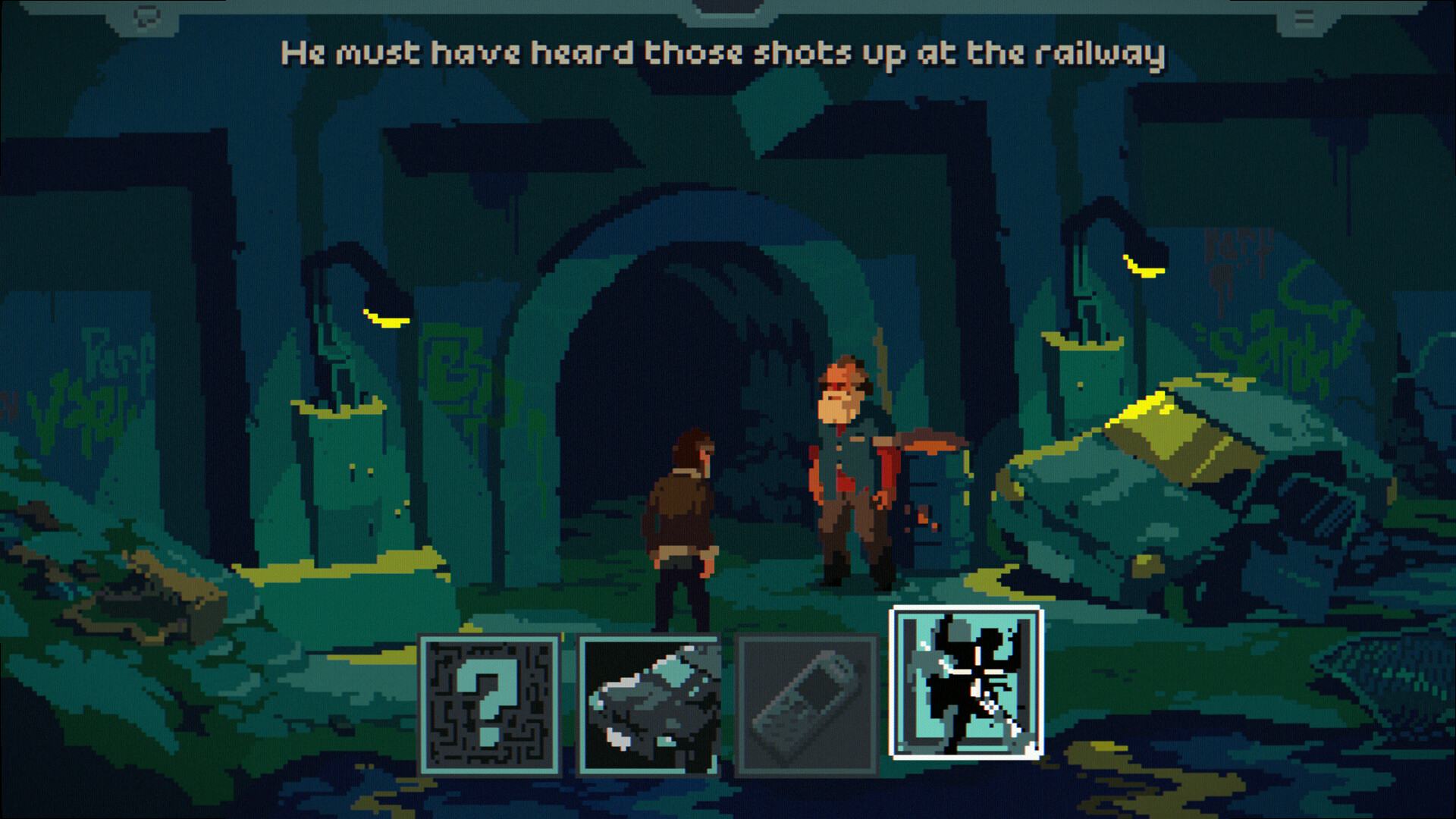
The 1990s are remembered as a golden age of point-and-click adventure games, thanks in large part to LucasArts’ incredible run of releases like Full Throttle, Day of the Tentacle, and The Secret of Monkey Island. The genre has since fallen from its pedestal, but it hasn’t disappeared entirely. Point-and-click games will never dominate the industry again, but they never went away either, and they’re having a renaissance if you know where to look.
One of the more eye-catching adventure games of this era is The Drifter. Developed by Powerhoof, creator of co-op RPG Crawl and the absurd sports game Regular Human Basketball, The Drifter has been in production in some form since 2017. After a few years of plucking away at the game as a side project, Powerhoof says it shifted into full development in 2021, and it’s finally announced a release date: July 17. Even better, The Drifter has a new demo available on Steam now.
From its opening moments, The Drifter is a gloomy, stylish thriller. Its demo, which covers the game’s first chapter, begins as Mick Carter wakes up in a train car. Homeless and estranged from his family, Mick is heading to his mother’s funeral when he meets an apparently crazy man who’s raving about conspiracies and time loops, only to see masked men shoot him. Mick escapes, setting off a story that Powerhoof says is inspired by Stephen King, Michael Crichton, and John Carpenter. I felt the Carpenter influence early on, as The Drifter quickly veers into biting social commentary when Mick takes shelter with other homeless people under a bridge and becomes the subject of a well-meaning but condescending journalist’s fascination.
The Drifter’s demo is only around half an hour long, but it shows a huge amount of promise. It’s hard to overstate just how good the opening chapter looks and sounds. Its pixel art is richly detailed, painting a vivid picture of Mick’s unglamorous life. Everything from a busted car to a trash can fire takes on a lurid kind of beauty, and the shockingly grotesque scene that ends the demo proves the power of its pixel art.
At the same time, a deep, moody synth score cements the game’s ties to Carpenter. Powerhoof also points to Ozploitation — trashy, low-budget Australian movies mostly made in the ‘70s — as a touchstone for The Drifter, another trait on full display in the demo. The game’s writing is overwrought in the best way, with Mick’s voice actor snarling and howling his internal monologue with everything he’s got.

As a point-and-click game, The Drifter’s main mode of interaction is puzzles, and so far, the game seems to be on the right track. Since this is the game’s opening, there’s nothing too tricky on display yet, but it doesn’t suffer from the sometimes opaque way that point-and-click games can present their puzzles. Solutions always seem like reasonable leaps from what you have, like using a knife to pry open a machine in lieu of a screwdriver, or using a tube meant to siphon gas to take a desperate breath while underwater.
The way The Drifter handles dialogue is also more satisfying than a typical conversation tree. When you come across an important topic, it’s added to a sort of mental inventory, and you can then ask characters you meet about it by selecting the topic and clicking on your target. It’s a good way to offer multiple conversation topics without just laying out an unwieldy list, and the inventory doubles as a handy reminder of important questions in any scene.
Despite its many horror and thriller influences, the B-movie conspiracy plot feels like an original story, and The Drifter’s extremely down-on-his-luck protagonist is an intriguing foil to the typical video game hero. The Drifter has been a long time coming, but after its exceptional opening chapter, I’m inclined to believe that it’s been worth the wait.







